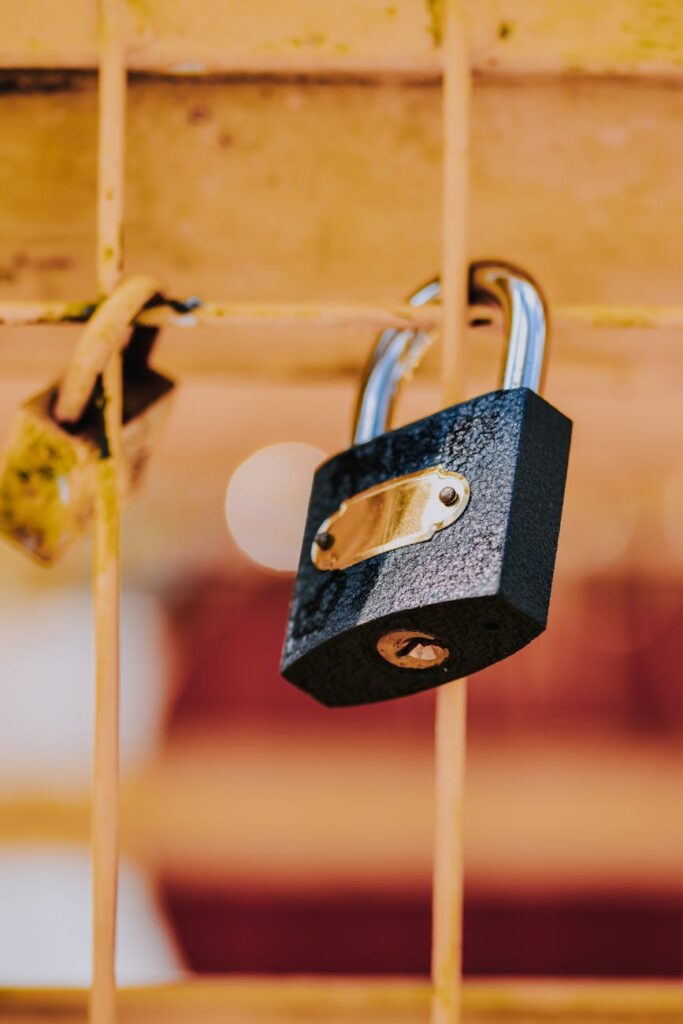Your Grandfather Left You a Watch. What Are You Leaving Your Kids?
Think about it for a second. The classic symbols of generational wealth are tangible. A sturdy oak desk. A Patek Philippe watch. Maybe a piece of land that’s been in the family for a century. You can see them, touch them, and the process for passing them down is written in legal stone, refined over hundreds of years. Now, look at your portfolio. What happens to your Bitcoin? Your Ethereum? Your collection of NFTs that, believe it or not, might be worth a fortune someday?
If your answer is a nervous shrug, you’re not alone. We are at the dawn of the largest wealth transfer in human history, and a rapidly growing chunk of that wealth is digital. Yet, most people have absolutely no plan for it. This isn’t just an oversight; it’s a disaster waiting to happen. Without a proper plan, your digital assets don’t just go to probate—they can vanish into the ether, lost forever. This is where a modern generational wealth strategy isn’t just a good idea; it’s a necessity.
Passing down crypto isn’t like willing your house to someone. You can’t just write “I leave my 0.5 BTC to my daughter” in your will and expect a lawyer to figure it out. The very nature of crypto—its decentralization, its security through private keys—makes it incredibly difficult to transfer after you’re gone. But it’s not impossible. It just requires a new way of thinking. A new playbook.
Why Your Old-School Estate Plan is Useless for Crypto
The estate planning industry is, to put it mildly, a bit behind the times. It’s built on paper, physical signatures, and centralized authorities like banks and courts. Cryptocurrency laughs at all of that. It’s designed to be sovereign, to be controlled only by the person who holds the keys. This creates a few massive, glaring problems for inheritance.
The “Not Your Keys, Not Your Coins” Paradox
This is the mantra of the crypto world, and for good reason. It emphasizes personal responsibility. But in death, this strength becomes a critical weakness. If you are the only person on Earth who knows your private keys or the seed phrase to your hardware wallet, that information dies with you. Your family could know for a fact that you owned millions in crypto, but without those keys, it’s like a locked treasure chest at the bottom of the ocean. It’s theoretically theirs, but practically, it’s gone. We’ve all heard the horror stories—the man who died with $200 million in QuadrigaCX funds, the guy who threw out a hard drive with 8,000 Bitcoin. Your lack of planning could be the next cautionary tale.
The Legal and Logistical Nightmare
Let’s say you were smart and wrote down your seed phrase. Great. Where is it? In a safe deposit box? Your executor needs a court order and a death certificate to open that, a process that can take months. What if the crypto market crashes in that time? What if you stored it in a password manager? Does your family know which one? Do they have the master password? What about the 2-Factor Authentication (2FA) tied to your phone? See the problem? Every layer of security you add to protect your assets while you’re alive becomes another wall your heirs have to break through when you’re not.

Building Your Crypto Generational Wealth Strategy: A 3-Pillar Approach
Okay, enough doom and gloom. Let’s get constructive. A successful crypto inheritance plan isn’t a single document; it’s a comprehensive system. It’s a living, breathing strategy built on three core pillars: Technical Safeguards, Legal Frameworks, and Human Education. Get these three right, and you’re not just passing down assets; you’re passing down a legacy.
Pillar 1: The Technical Safeguards – Choosing Your Inheritance Method
This is the “how.” How will your heirs physically gain control of the assets? Simply writing down a seed phrase and hoping for the best is a rookie move. We need something more robust. There are several advanced methods, each with its own pros and cons.
- Cryptocurrency Trusts: This is where you bring the old world and the new world together. You can create a legal trust and transfer ownership of your crypto to it. You appoint a trustee (or multiple co-trustees) who is legally obligated to manage and distribute the assets according to your instructions. This is one of the most legally sound methods, but it requires finding a trustee who is both trustworthy and tech-savvy enough to handle crypto.
- Multi-Signature (Multi-Sig) Wallets: Think of this as a bank vault requiring multiple keys to open. A multi-sig wallet can be configured to require, say, 2-of-3 or 3-of-5 private keys to authorize a transaction. In an inheritance scenario, you could hold one key, your lawyer a second, and your heir a third. This way, no single person can run off with the funds, and a combination of trusted parties can access them when the time comes.
- Shamir’s Secret Sharing (SSS): This sounds like something out of a spy movie, and honestly, it’s just as cool. SSS allows you to split a single private key (or any piece of secret data) into multiple unique parts called “shards.” You can then decide how many shards are required to reconstruct the original key. For example, you could create 5 shards and decree that any 3 are needed. You could give one to your spouse, one to each of your two children, one to your estate lawyer, and keep one in a bank vault. This provides incredible redundancy and security.
- Inheritance-Focused Platforms: A new industry is emerging with services designed specifically for this problem. Companies like Casa and Unchained Capital offer sophisticated multi-sig solutions, while others are developing smart-contract-based systems that can automatically release funds upon the verification of a death certificate. These are powerful but require immense trust in the platform itself.
Pillar 2: The Legal Framework – Don’t Go It Alone
The technical setup is half the battle. You absolutely need to back it up with clear, legally binding instructions. This is non-negotiable. You need a professional who understands both estate law and the blockchain.
Finding a crypto-savvy estate lawyer is critical. When you interview them, don’t just ask if they’ve handled crypto before. Ask them *how*. Ask them about private key management, trusts versus wills for digital assets, and how they would instruct an executor. Their answers will tell you everything you need to know about their competence. This professional will help you draft a will or, more likely, a trust that explicitly mentions your digital assets and provides clear instructions for your chosen technical method.
You’ll also need to appoint a Digital Executor. This can be the same person as your regular executor, but it needs to be someone you trust implicitly who also has a baseline level of technical skill. Leaving your tech-phobic aunt in charge of your multi-sig wallet is a recipe for disaster. This person will be responsible for marshaling your digital life—not just crypto, but online accounts, social media, and more.
Your legal documents should not contain your private keys or seed phrases. Never. They should contain instructions on how to find the keys and access the assets, pointing your executor to the technical system you’ve set up.
Pillar 3: The Human Element – Educating Your Heirs
This might be the most important and most overlooked pillar. You can have the most brilliant technical and legal plan in the world, but if your heirs don’t understand what they’re inheriting, they could lose it all to a simple mistake or a phishing scam. Inheriting crypto isn’t like inheriting a bank account; it’s like being handed the keys to your own personal bank. It comes with immense power and immense responsibility.
Start the education process now. Don’t wait until you’re gone. Talk to your heirs about why you’ve invested in this asset class. Teach them the basics: What is a blockchain? What is a private key? What’s the difference between a hot wallet and a cold wallet? Most importantly, teach them about security hygiene. The world of crypto is filled with sharks, and a newly wealthy, inexperienced heir is the perfect target. Your greatest gift isn’t just the coins; it’s the knowledge to protect them.
The Conversation You Absolutely Must Have
Talking about money and death is uncomfortable. Talking about crypto, money, and death can feel downright impossible. But it has to happen. You need to sit down with your spouse, your children, or whoever your beneficiaries are and walk them through your plan. This isn’t a single conversation; it’s an ongoing dialogue.
- Set the Stage: Don’t spring this on them over Thanksgiving dinner. Schedule a specific time. Explain that you want to talk about your estate plan and that it includes some non-traditional assets you want to make sure are protected for their future.
- Explain the ‘Why’ First: Start with your philosophy. Why do you believe in this technology? Why have you invested a portion of your wealth in it? Getting them to understand your conviction is the first step to them taking it seriously.
- Introduce the ‘What’ and the ‘How’: Explain, in simple terms, what you own. You don’t need to disclose exact amounts if you’re not comfortable, but they need to know what exists. Then, walk them through the system you’ve created—the multi-sig setup, the location of the letter of instruction, the role of the lawyer and digital executor.
- Introduce the Key Players: Make sure they know who the lawyer and digital executor are. If possible, facilitate an introduction so they aren’t meeting for the first time during a crisis.
- Set Expectations: This is huge. Instruct them on what to do, and what *not* to do. For example, you might strongly advise them not to liquidate everything immediately, especially in a down market. You might encourage them to work with a specific financial advisor you trust.
- Plan for Updates: Your plan needs to be reviewed annually, just like any other part of your financial life. When you do a review, update your loved ones.

Conclusion: Your Digital Legacy
Building a generational wealth strategy for your crypto assets is undeniably more complex than traditional estate planning. It requires a proactive approach that merges cutting-edge technology, solid legal advice, and open family communication. It’s not something you can set and forget. It requires thought, effort, and a willingness to navigate a new and evolving landscape.
But the alternative is unacceptable. To let a lifetime of smart, forward-thinking investment simply disappear due to a lack of planning is a tragedy. By taking these steps, you are doing more than just protecting your portfolio. You’re securing a future for your loved ones. You’re building a digital legacy designed to last for generations. And just like your grandfather’s watch, that’s a gift that is truly timeless.


